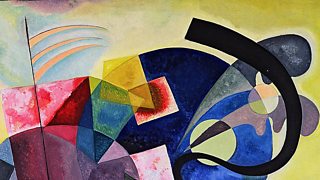Peter Saville: Abstraction and Design
9 September 2014
Legendary designer Peter Saville says abstract art is part of our everyday lives. From Kasimir Malevich and his Black Square through to contemporary product design, in an exclusive film he makes the argument that modern devices such as iPods owe their shape and feel to pioneers of Abstraction.
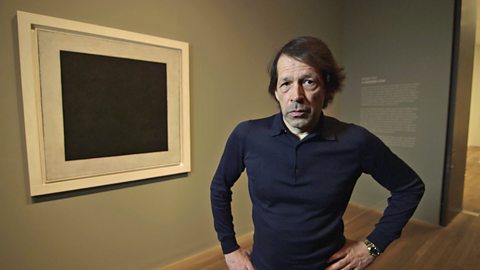
Peter Saville: Abstraction and Design
The Factory Records designer explores the impact of abstract art on 20th-century design.
Abstraction and Design timeline
1915: Malevich develops Suprematism
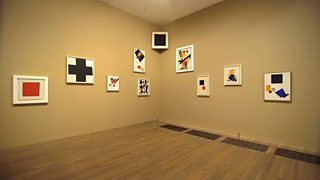
Russian painter and designer Kasimir Malevich was born in Kiev in 1878 and became a leading pioneer of abstract art. At first he painted mainly post-impressionist landscapes, and began around 1909 to paint peasant subjects, developing by 1912 a tubular stylisation related to Cubism. He then made paintings of still lifes and figures from 1913-14 in a Cubo-Futurist style.
From 1915 Malevich embarked on a completely abstract style to which he gave the name Suprematism, based on pure geometrical elements in relationships suggesting floating, falling, ascending and so on.
In 1919 he wrote a book, On New Systems in Art, and moved to Vitebsk at the invitation of Chagall to teach at the art school. There he organised his supporters into a group under the name Unovis ('affirmation of new art'). The same year he began to make architectural models as well as paintings, and soon had his first one-man exhibition in Moscow.
Malevich moved to Leningrad in 1922 and joined the staff of the Institute for Aesthetic Culture. He travelled to Warsaw and Berlin in 1927 with an exhibition of his works, and visited the Bauhaus at Dessau. In the years before his death in 1935, he reverted to painting pictures of very stylised figures.
His most significant works are the Black Squares - the artist created four variants of the original work from 1915-1930, varying in colour, design and texture. Malevich would return to the Black Square whenever he felt the need to assert his work in a significant way.
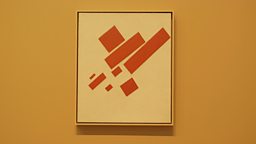
1919: The Bauhaus is born

The Bauhaus school of fine arts, design and architecture was started in Germany in 1919. They believed that artists and designers should study together with craftsmen, and there should be no delineation between the two.
Walter Gropius, the founder of the Bauhaus, formulated a new approach under the motto 'art and technology – a new unity', recognising industry as a defining force of the age.
The school was operational until 1933 when it was closed under pressure from the Nazi regime.
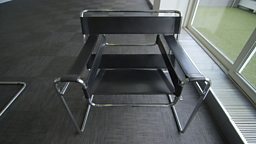
1955: Dieter Rams joins Braun

For four decades from 1955, Dieter Rams designed or oversaw the design of over 500 products for the German electronics manufacturer Braun, as well as furniture for Vitsoe.
Audio equipment, calculators, shavers and shelving systems are just some of the products created by Rams. Each item holds a special place in the history of industrial and furniture design and has established him as one of the most influential designers of the late 20th century.
Dieter Rams devised ten principles of good design;
- Good design is innovative
- Good design makes a product useful
- Good design is aesthetic
- Good design makes a product understandable
- Good design is unobtrusive
- Good design is honest
- Good design is long-lasting
- Good design is thorough down to the last detail
- Good design is environmentally friendly
- Good design is as little design as possible

1996: Jonathan Ive leads Apple design
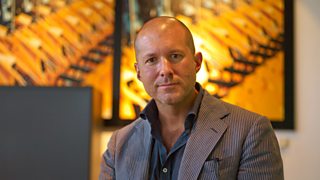
London-born designer Jonathan Ive is Apple's senior vice president of design.
Since 1996, he has been responsible for leading the design team which has produced some of the most striking products of recent years, from the iMac to the iPhone.
His design for the original iPod music player, which was released in October 2001, has changed our relationship to technology.

Peter Saville
Peter Saville's images have permeated contemporary culture. As a founder of Factory Records he was instrumental in bringing the tropes of high Modernist culture to a mass audience who would never otherwise have engaged with avant-garde imagery.

His radical designs, most notably for Joy Division and New Order, seemed to break all the rules, omitting information about artists or titles, fundamentally questioning modes of consumption and advertising.
His recent work straddles design, art and culture and he is the Creative Director for the City of Manchester.
Abstraction
-
![]()
Exclusive features
When Art Broke Free: explore one of art's most groundbreaking forms with a season of special programmes, unique archive, and exclusive online content including films, features & timelines.

